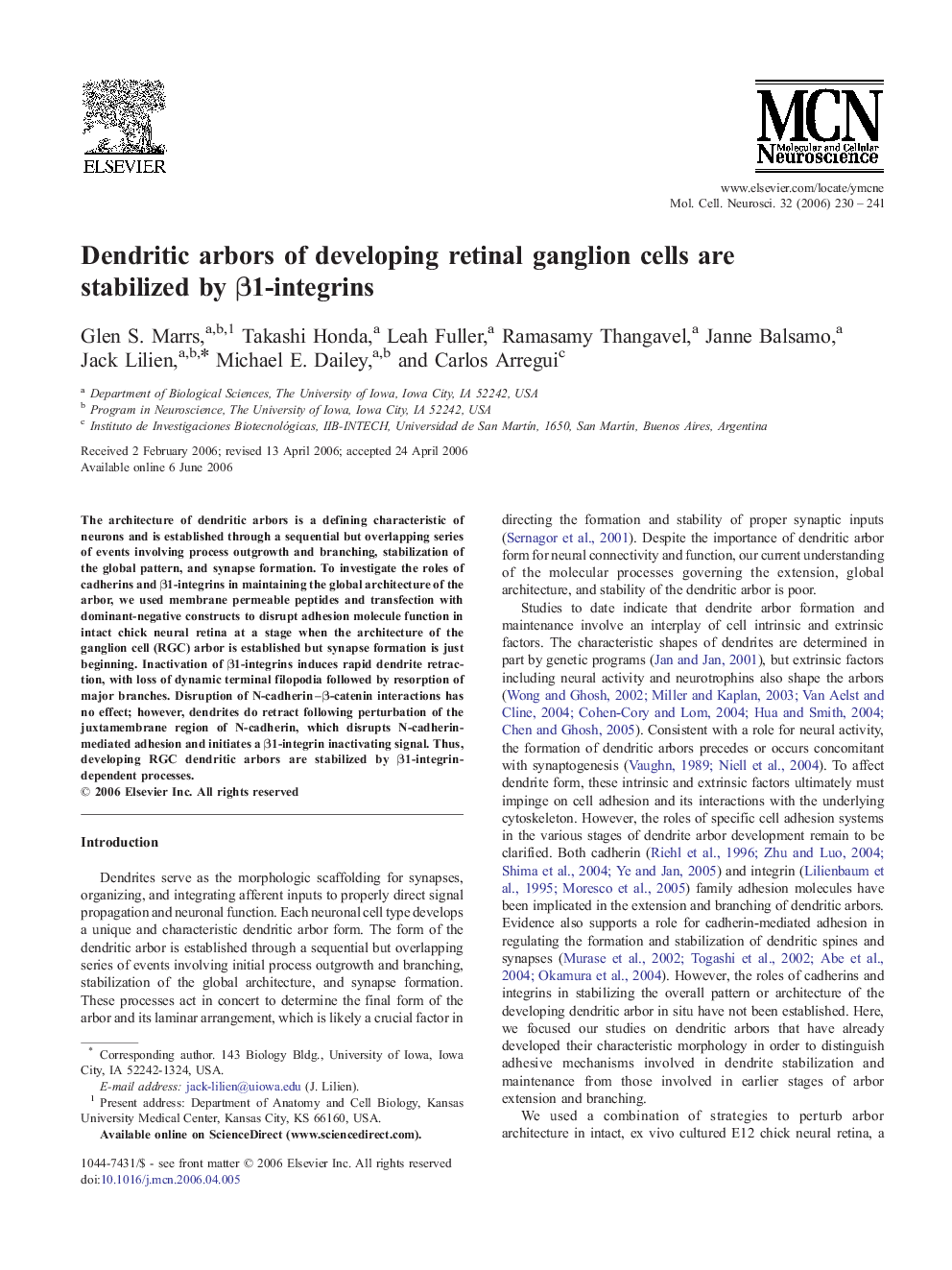| Article ID | Journal | Published Year | Pages | File Type |
|---|---|---|---|---|
| 2199271 | Molecular and Cellular Neuroscience | 2006 | 12 Pages |
The architecture of dendritic arbors is a defining characteristic of neurons and is established through a sequential but overlapping series of events involving process outgrowth and branching, stabilization of the global pattern, and synapse formation. To investigate the roles of cadherins and β1-integrins in maintaining the global architecture of the arbor, we used membrane permeable peptides and transfection with dominant-negative constructs to disrupt adhesion molecule function in intact chick neural retina at a stage when the architecture of the ganglion cell (RGC) arbor is established but synapse formation is just beginning. Inactivation of β1-integrins induces rapid dendrite retraction, with loss of dynamic terminal filopodia followed by resorption of major branches. Disruption of N-cadherin–β-catenin interactions has no effect; however, dendrites do retract following perturbation of the juxtamembrane region of N-cadherin, which disrupts N-cadherin-mediated adhesion and initiates a β1-integrin inactivating signal. Thus, developing RGC dendritic arbors are stabilized by β1-integrin-dependent processes.
